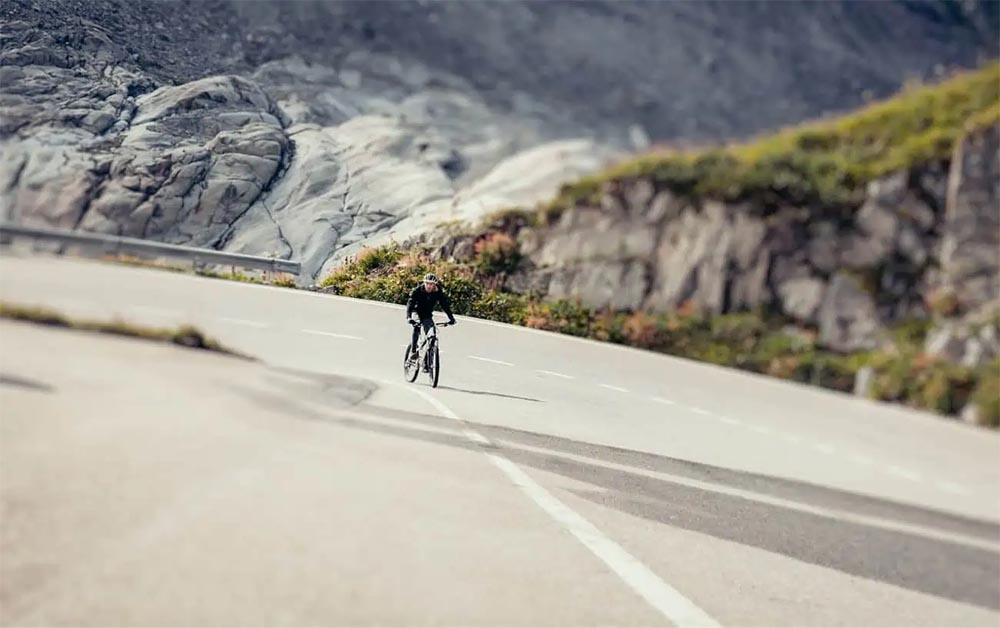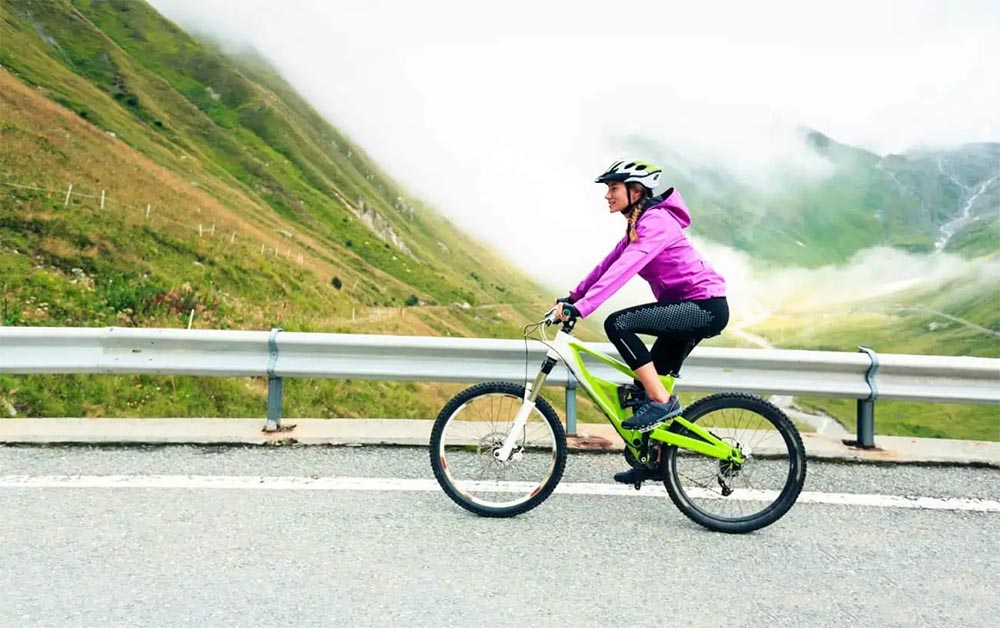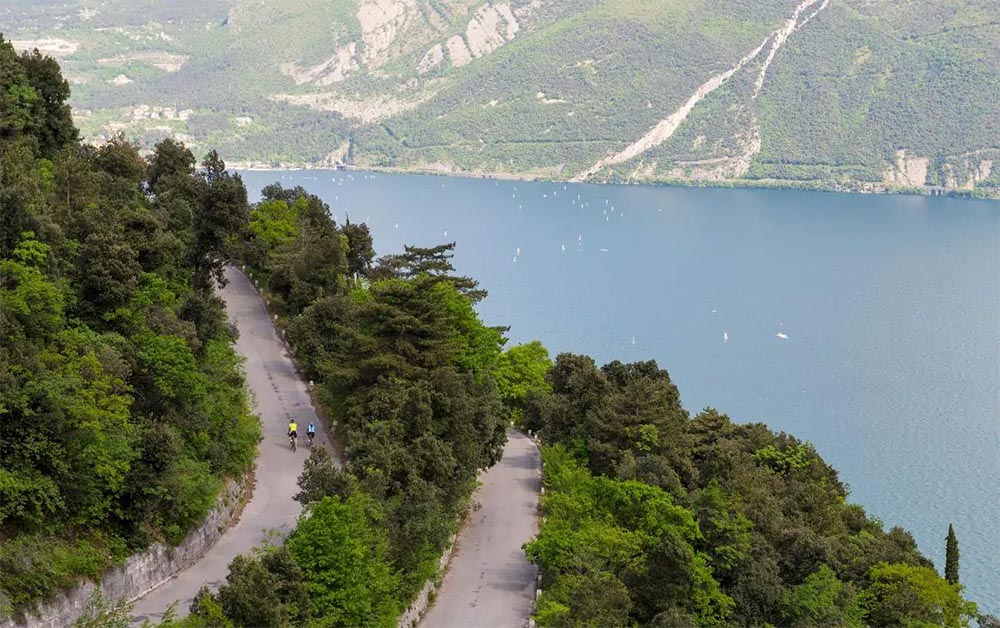How to Ride a Bike Uphill Efficiently: 10 Uphill Riding Tips

Ask any beginner to intermediate cyclist about the challenges they face while cycling, and chances are the topic of how to ride a bike uphill will come up.
Difficulty climbing hilly terrain is one of the most common difficulties encountered by cyclists.
Many riders are terrified of riding sections where the terrain becomes steeper than their daily commute, regular training loops or weekend group riding routes.
Cycling uphill doesn’t have to be a huge obstacle to fully enjoying the cycling experience.
Whether the climb rating is a mild 3% or a lethal 25% (or more), cycling uphill is often scary but rarely fully understood.
Armed with the knowledge you need to ride a bike uphill, I’m not only sure you’ll start riding steeper grades with more confidence, but I’d even say you might start enjoying your bike uphill!
get ready? Let’s jump in!
The Science of Cycling Climbing
The journey to becoming a better uphill cyclist starts with looking at the fundamental factors that determine how easily a rider can handle steep road grades.
I often like to think of these factors as either rider-specific or bike-specific, like this:
Driver Specific Factors:
strength,
Rhythm,
aerobic capacity,
weight distribution,
pacing,
breathe,
and nutrition.
Bike Specific Factors:
transmission,
weight,
Fits the bike.
Below I explain each of these factors in more detail.
But first, let’s start with the most important factor: cycle power.
What is cycling power and why is it important for better uphill riding?
Simply put, riding power is the amount of energy a rider produces to keep the bike moving, measured over time.
When you ride a bike, you are the engine. The energy your muscles generate to apply force to the pedals, turn the cranks, and engage drivetrain gears is what keeps your wheels rolling.
Power is measured in watts (w). Devices called power meters can be integrated into some types of bicycle cranks, hubs, or pedals and can continuously monitor your energy output and give you a snapshot of your power data at any given moment.
Instead of delving into the nuances of power meters and power-based training here, we’ll use a fundamental understanding of bike power to highlight the key factor for going uphill faster: your power-to-weight ratio.
Take the following practical example of a power supply:
Let’s say you’re riding on a flat road and your power output is about 150w @ 25km/h. Then the road starts going uphill and your power output is still 150w, but now your speed drops to 15km/hr.
Your power hasn’t changed, so what’s the reason for the drop in uphill speed?
In the above case, given a constant power output and reducing speed, what happens here is that you’re not really working harder on a hill than on a flat road, but the same effort rate (i.e. power) now It’s battling gravity, which means the same amount of power is just enough to produce a reduced speed.
This explains the frustration of feeling sluggish on a climb or getting tired quickly when trying to ride a bike uphill faster (because you’re effectively trying to increase the power output to keep the same speed).

With this understanding of riding power, there are several things you can do to become a better climber.
Let’s take a look at the top 10 tips for becoming a bike climber:
#1: Leverage the Mechanical Advantage
Pushing a lower gear keeps a constant cadence as your incline increases.
To do this, you need to make sure your bike is equipped with the right gear ratio for the terrain you ride most often.
For road bike gearing, a compact (53/34t chainring) or ultra-compact (48/32T chainring) crankset can give you a more slack low range, especially with a 32T or 34T max gear when used in conjunction with the flywheel.
#2: Improve Your Power-to-Weight Ratio
There are two ways to improve your power-to-weight ratio to become a better climber:
1) Increase your power output by training your aerobic capacity and strength, or
2) Lose weight.
It doesn’t have to be one of them, though.
A basic but structured training program, combined with good nutrition and sleep, will allow you to improve your endurance and strength while shedding extra pounds.
The weight of the bike itself is also important. Using lighter components and easier-to-roll tires can make your bike a better climber (remember again: a lighter bike will feel easier uphill, but you’re the motor!)
#3: Exercise Your Climbing Rhythm
Cadence is pedal revolutions per minute.
On smooth roads, recreational cyclists typically maintain a cadence of 75-90 revolutions per minute (rpm).
When climbing, a 60-80 cadence is usually ideal.
Not only is the correct cadence important, but so is the quality of the pedal stroke. The smooth pedal travel avoids the balance disruption that is more prone to occur on very steep grades due to the much lower speed.
A smoother pedaling action will free you from thinking about balancing on the bike, further saving energy.
#4: Transfer before you have to
Make sure you are in the correct gear before you are already on the steepest part of the climb.
This ensures you can maintain a smooth rhythm and avoid sudden shifts that can disrupt your pedaling rhythm.
#5: Avoid early redo
Learning to adjust your speed allows you to ensure that you have enough energy reserves to complete long climbs without feeling completely exhausted, which may force you to stop or dismount and walk.
Don’t get carried away too soon.
If riding in a group, ride at your own pace and don’t feel like you have to keep up if other riders are faster.
Remember: different riders will have different power-to-weight ratios, and it’s important to adjust your riding speed in a way that suits your current fitness level and experience.
#6: Stay in the Saddle
Climbing out of the saddle certainly has its advantages, but it’s more of an advanced skill because you’re using different muscle groups, and your upper body and core become more active when you pedal in a standing position.
Staying in the saddle allows you to step out of a smoother rhythm, save more energy by pushing down gears (see point 1) and maintain a more regular breathing rhythm.

#7: Pay Attention to Your Bike Fit and Riding Position
The assumption here is that you’re already riding a bike that’s right for you, and it’s always worth paying attention to your fit and position on the bike.
A bike frame that’s too big or too small for you can affect your comfortable position on the bike, and therefore your ability to deliver optimal power output when climbing hills.
If you are riding a road bike with low handlebars, you can try different hand positions (i.e. on top of the handlebars or on the shifter cover) for unrestricted breathing and a more comfortable upright position.
If you have a headwind on a milder slope (5% or less), you can try riding in the drops for a more aerodynamic position.
#8: Legs, Lungs and Mind
Your aerobic efficiency, power-to-weight ratio, and cycling strength will play an important role in your climbing ability, but let’s not forget the very important role our mind plays in physiological effort.
Big mountains do look intimidating, especially when approaching them from a distance.
Learn to break up big efforts and focus on one part at a time.
Having the right gearing, a light bike, and good training is important, but our mindset is often the key pivot where all these factors come together and deliver the performance you need to go uphill with relative ease.
#9: Plan Your Route to Know What Happens
I often like to explore new routes and have a loose riding plan with only one general direction.
Discovering new routes is one of the great benefits of cycling. However, when you’re not ready for a big effort, it can be frustrating to go on a ride with a possible 30% incline climb – especially if you’re just trying to master how to ride your bike uphill.
Many cycling map apps, as well as the latest cycling computers with integrated navigation, can help you plan your ride, allowing you to anticipate any big climbs along the way, allowing you to plan your nutrition and pace accordingly .
#10: Relax!
Stress can cause your energy expenditure to soar and your bike to be less efficient.
Given that you are in a comfortable position on the bike (see point 7), keep your elbows slightly bent, open your chest for breathing, and watch your heart rate.
Maintain a breathing pattern that allows you to control your heart rate and avoid spikes that can push you past your anaerobic threshold, beyond which point lactic acid starts to build up in your muscles and you feel a burning sensation in your legs.
To sum it up – how to ride your bike uphill more efficiently:
Learn what bike power is and how to improve your bike’s power output,
Make sure your bike has the correct gearing for your terrain,
Plan your rides to predict climbs,
Train to maximize your aerobic capacity, core strength and improve your pedaling technique.
If you are looking for a new way of commuting or want a healthier lifestyle, we are here to help you. Visit our website to learn more about electric bikes and electric scooter or please leave information to us.
 Shuangye ebike
Shuangye ebike
